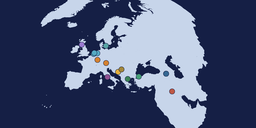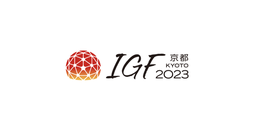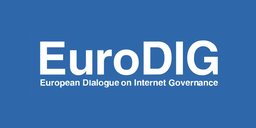In this article, I will delve into the insights shared during the Diversity in Tech session at RIPE 87, focusing on the following groups at RIPE Meetings: academics, newcomers, and women. The main findings show an unforeseen drop in academic participation after the pandemic. We will monitor if this is an exception or a persistent trend. Additionally, gender diversity within the RIPE community lags behind the industry norm and is projected to get worse.
Mahatma Gandhi once said, "Our ability to reach unity in diversity will be the beauty and the test of our civilization." Diversity fosters innovation and problem-solving by bringing together a variety of expertise, viewpoints, and experiences, enriching discussions, and ensuring fair representation and understanding in an increasingly complex world. As we approach RIPE 88 in Krakow, let’s put an effort into listening and understanding people with differing viewpoints, and value dialogue over persuasion.
Below, I present data on the last 22 RIPE Meetings (RIPE 66 to RIPE 87) sourced from our meeting software.
Academics
The historical composition of RIPE Meetings reveals a notable shift, with academia comprising over half of the attendees three decades ago, versus now, where for-profit entities dominate attendance, in part due to their greater financial resources. Despite a rise in absolute numbers, academic representation has dwindled proportionately.
Students
This number is a combination of the reduced-price €50 student tickets as well as any free student tickets allocated by the RIPE Chairs. For the virtual meetings during the pandemic, this data doesn’t exist, as attendance was free of charge for all. These meetings are excluded from the calculation of the average.


Looking at the last 22 meetings, the absolute number of students per RIPE Meeting averages to about 12 or 2% of the total meeting attendees.
What do we do to attract more students? In addition to the reduced ticket for €50, in the past two years, we’ve stepped up outreach to universities in the host country of the RIPE Meeting. Since the meeting ticket is a smaller financial burden to the students compared to paying for the flight and accommodation to come to the meeting, local universities are the lowest-hanging fruit. We also organise an online session three weeks before the RIPE Meeting, where students get an introduction to the RIPE community and listen to technical presentations. In addition, after the pandemic, the RIPE Chair team approved the distribution of up to 15 free tickets for local students. This way the financial burden for local students to attend is entirely removed.
Academics
This number reflects the attendees who selected “Education” as the industry when registering for the meeting. These numbers include both the students who selected “Education” as well as the RACI attendees.


Academics, in general, average 53 attendees per meeting or 8.46% as a percentage of total attendees. During the pandemic, we saw some of the highest attendance from academia both in terms of absolute numbers and percentage of total attendees. We can see that in three of the last four meetings (RIPE 84 in Berlin, RIPE 86 in Rotterdam and RIPE 87 in Rome) the attendance as percentage is noticeably lower than the average: 5.98%, 7.13% and 7.51% respectively. I’m not sure if this is a trend or a result of travel for academics still being restricted shortly after the pandemic. I will monitor if this trend persists over the next few years.
What do we do for academics? Most of you have probably heard about the RIPE Academic Cooperation Initiative, which covers travel, accommodation and the meeting fee for academics with useful research to present at the RIPE Meeting. We also organise a session and a reception for academics and NRENs, usually on the Monday or Tuesday of the RIPE Meeting, for them to get to know each other. We also host academic sessions at universities – either online or in person if we happen to be in their city for another event. We’ve significantly stepped-up efforts in this area, having hosted 14 sessions last in 2023 and seven sessions so far in 2024. If you want us to present to your students, let us know! We also sponsor and attend a number of academic conferences and our researchers help academics with data and analysis using our tools.
Newcomers
This is the number of people who ticked the “This is my first RIPE Meeting” box on the registration page. For the first two virtual meetings, RIPE 80 and RIPE 81, we did not include this box on the registration form, which is why I do not have this data.


When it comes to newcomers, on average we see 179 people per RIPE Meeting. Interestingly, the meetings being fully online did not mean more newcomers. On the contrary: as a percentage of the total it is some of the lowest – around 21%. This means that the meeting being virtual encouraged more people already familiar with the RIPE Meeting to join again. As a percentage of the total attendees, the number fluctuates between 20 and 30% of total attendees with an average of 26.35%.
What do we do for newcomers? Once they register as newcomers for the RIPE Meeting, we undertake several initiatives to make their experience at their first RIPE Meeting smoother. First, we have a mentorship programme where we match them with an experienced community member who can introduce them to the RIPE Meeting and key people in the community. We have Meet and Greet lunches and a Meet and Greet desk. We organise two newcomer sessions – one a week before the RIPE Meeting and one just before the Opening Plenary at the meeting. We also have a newcomer reception – usually on the Tuesday of the meeting.
What do you think about the percentage of new attendees? Is this a good figure? Is it too low? Too high? What can we do to attract more newcomers? Please leave your ideas in the comments!
Women
Two fields in the meeting registration software help me determine if an attendee is a woman – if they filled in their salutation “Ms” or if they selected “Female” as the gender. Both of these fields are voluntary, which leaves a few unknown values. The vast majority of those unknowns is RIPE NCC staff, whom I know. The rest I determine individually by looking at the name. My hope is any error I’m introducing is both small and consistent, so it wouldn’t influence the trends we are looking at.


On average there are 99 women per RIPE Meeting, which is about 15.12% of total attendees. Interestingly, during the pandemic, there is a lower percentage of women attending (12.69%, 13.18%, 13.79% and 12.40%). This fits with the general observation that the pandemic disproportionately affected working women: the burden of unpaid labour in the household fell on women, so they did not have the opportunity to attend events or even stay employed.
It's worth mentioning here that there were some concerns about Belgrade as a location for the RIPE 85 Meeting. When it comes to the participation of women, this was our best meeting so far – almost 20% of the attendees were women.
How do these numbers compare to the IT industry as a whole? The share of women employed as ICT specialists varies between 15-25% in Western Europe and 25-35% in Eastern Europe. Among some of the top tech firms, Apple reports having 33% of female employees (that number drops to 23% for the technical teams), Google – 32% and Meta/Facebook - 37%. There numbers are higher than the 15.12% we see at RIPE Meetings, which is concerning. What can we do to increase this number?
What do we do to attract women? While we do not have initiatives exclusively targeting women, we started offering childcare at RIPE Meetings in an attempt to make it easier for new parents to attend. This service depends on demand - please notify us before 5 May if you'd like to have it for RIPE 88 in Krakow. Our Fellowship programme does not specifically target women, although it is one tool through which we try to increase all types of diversity.
Female Newcomers


Looking at the numbers of women among newcomers we see approximately 26 new women at RIPE Meetings or 14.79% of the total newcomers. This number is lower than the average number of women from the total attendees (15.12%). This paints a bleak picture. If we look at the newcomers as the future of the RIPE community, these averages tell us the percentage of women at RIPE Meetings is going to reduce further.
Female Speakers
The difficulty when measuring speakers is that sometimes the same person has multiple slots in the programme (which I've counted as different speakers) and sometimes even in the same session (which I've counted as one speaker). Any bias I might have introduced is consistent, and wouldn't affect the general trend.

Among speakers there is a lot more variety than among attendees. About 20.57% of Plenary speakers and 18.81% of Working Group speakers are women, resulting in an average of 18.96% of all speakers. Working Group sessions weigh heavier on the average, as they have more speakers. The fact that there are more women among speakers (18.7%) than among attendees (15.12%), might be because it is easier for women in senior positions with presentation material to secure funding to attend the RIPE Meeting or conversely, that it is difficult for women in junior positions to do so. If you are a manager or budget holder, this is something to think about.
Non-binary
Since RIPE 77, we added the voluntary field "gender" in our registration form, which includes the option "non-binary". On average two people identify as such per meeting.

This article focuses on three groups attending the meetings: academics, newcomers and women. Two concerning trends are the declining number of academics and the small percentage of women at our meetings compared to their industry representation.
Plenty remains to be explored such as age distribution, repeat attendance, and geographical distribution. For now, please give us your thoughts on what you’ve seen above. Do you have any suggestions on how we can attract more people from these groups? Please post in the comments of this article, on the RIPE mailing list or the RIPE Diversity mailing list, or if you prefer to remain anonymous, email me directly.










Comments 0